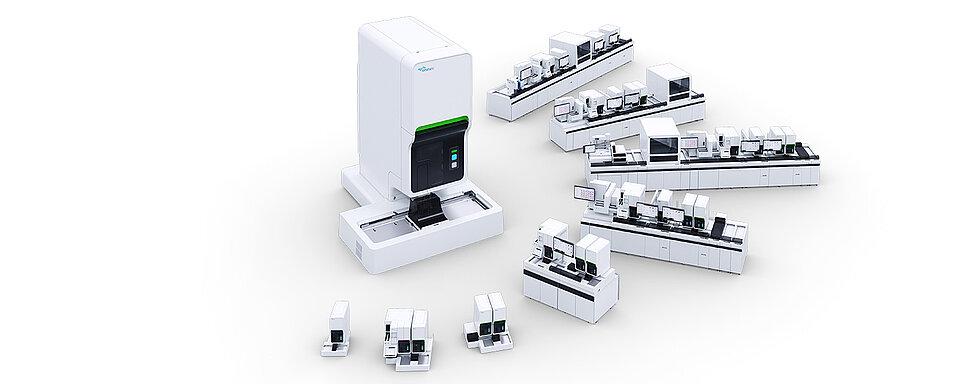Observe early signs of successful stem cell engraftment
Patients from a wide spectrum of disorders, from leukaemias and lymphomas to solid tumours, benefit from haematopoietic stem cell transplantation (HSCT). Initially, chemotherapy rounds eradicate both tumour and healthy haematopoietic and immune cells, so the patient is vulnerable to infections during this period. The stem cells that will then be transplanted have either been harvested from donors or the patient’s own blood after stimulation with an agent that will release these cells from the bone marrow. Once the HSCT has been performed, a close monitoring of the engraftment of the new stem cells follows.
The routine blood count provided by the Sysmex XN-Series supports the patient monitoring during and after chemotherapy.
Benefits of monitoring your HSCT patients with a routine blood count
-
Timely identification of severe febrile leucopenia, thrombocytopenia or infection in patients undergoing conditioning therapy before stem cell transplantation, based on unique parameters.
-
Confident and early monitoring of stem cell engraftment and bone marrow recovery by assessing the levels of immature reticulocytes and platelets in peripheral blood.
-
Reliable platelet enumeration even at very low levels together with an immature platelet count can help to guide a clinical decision on platelet transfusion.
-
White blood cell counts can be assessed as low as 30 WBC/μL.
Chemotherapy monitoring
A 52-year-old woman with ovarian cancer underwent four rounds of chemotherapy. A complete blood count was performed on a Sysmex XN-Series analyser at intervals during the different cycles of therapy to support the identification of possible complications. On day one of the third cycle, the red blood cell count (RBC 2.88x106 cells/μL, HCT 24.9%) as well as the white blood cell count (2.2x103 cells/μL) and platelet count (36x103 cells/μL) were decreased, but did not reach alarming levels. Immature platelet fraction (IPF) was at 6.1%.
On day eight of the third round, the platelet count reached a critically low level (PLT 21x103 cells/μL) while the red and white blood cell counts showed already a slight increase. IPF was markedly increased (IPF 47%, normal range: 0.9–7.0%), suggesting that the bone marrow was appropriately producing new platelets at a high rate. The clinician assessed that the patient was stable and recovering, so chemotherapy was administered as scheduled and the patient returned home to recover.
Follow-up tests showed that increased IPF values had preceded the normalisation of the platelet count (PLT 125x103 cells/μL at the beginning of round four) and helped to avert an unnecessary, costly and potentially harmful transfusion with platelet products.
![[.CO.UK-en United Kingdom (english)] Stem cell transplantation](/fileadmin/_processed_/e/d/csm_shutterstock_364558868_3e2fe5bd7b.jpg)


